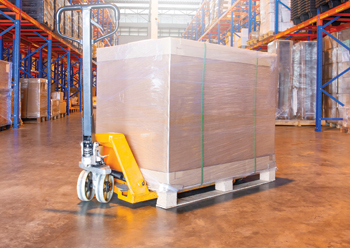
 Companies are increasingly turning to newly developed material handling technologies
Companies are increasingly turning to newly developed material handling technologies
The global material handling industry has evolved rapidly during the last decade and its trajectory has been impacted by everything from financial crises to trade disputes, observes a new study ‘Global Material Handling Equipment’ by The Freedonia Group.
The Covid-19 pandemic had a profound impact on the industry between 2020 and 2021 as it disrupted the operations of companies around the world, and highlighted the vulnerability of international supply chains and growing concerns about workforce issues. International trade and tourism activity declined, commodity prices fell and remained volatile, and currency exchange rates fluctuated, leading to a reduction in spending on material handling machinery, noted the report.
Looking forward, there are seven important short-term and long-term trends that will impact the development of the global material handling industry as well as its growth prospects:
 |
Through 2026, the use of automated guided vehicles will climb swiftly around the world |
Inflation and Supply Chain Issues: In the near term, inflation and supply chain issues will continue to impact the material handling equipment pricing and availability, as well as the profitability of companies around the world and their equipment spending patterns. For instance, delays at ports make it less likely that operators will invest in new material handling machinery.
Conflict in Ukraine: Political tensions and the economic impact of the sanctions and counter-sanctions imposed on/by Russia and allies of Ukraine will disrupt multiple industries in Europe, ranging from agriculture and mining. The impact of the conflict will also be felt outside of the region in a variety of ways, ranging from higher energy and food prices to reduced international to exchange rate volatility. Even the phasing out of sanctions and counter-sanctions will be a complicated and drawn-out process.
Trade Disputes: Trade tensions – such as those between the US and China, and the EU and the UK – will continue to have an impact on both international trade and associated demand for material equipment. Such disputes also have an impact the profitability of companies around the world and they are less likely to make major investment in the face of uncertainty.
Continuing Impact of the Covid-19 Pandemic: The Covid-19 pandemic will continue to impact the growth potential of multiple-end use markets for material handling equipment around the world in the near term. An intensification of the pandemic – including new Covid-19 variants – could potentially have a much greater impact on the global material handling equipment industry.
Surging E-Commerce: The rapid growth that global e-commerce sector has experienced in recent years will continue in the long-term, leading to new companies entering the business and the construction of new facilities (such as warehouses) and the expansion of existing sites. As companies grow in size, their use of advanced technologies – such as automated storage and retrieval systems will increase.
Technological Innovation: Manufacturers of material handling equipment are incorporating a wide range of advanced technologies into the next generation of machinery, greatly increasing their capabilities. The development of more environmentally-friendly machines that reduce energy consumption and increase efficiency will be a key driver of innovation.
Workforce Issues & Automation: Companies around the world are becoming increasingly concerned about a variety of workforce issues, such as rising labour costs, worker retention, and the availability of skilled operators. This trend will drive increased interest in advanced material handling equipment, particularly automated models. Through 2026, the use of automated storage and retrieval systems and automated guided vehicles will climb swiftly around the world as operators in multiple industries adopt these technologies.
As companies around the world confront a variety of workforce challenges and face intensifying competition, they are increasingly turning to newly developed material handling technologies. The automated guided vehicles (AGVs) segment has seen particularly impressive innovation gains in recent years, sparking increased interest:
• In March 2022, Gaussin unveiled the world’s first hydrogen-power automated guided vehicle, which will be used in port applications
• JBT unveiled a groundbreaking AGV for warehouse freezer applications (an underserved market) in April 2021, and the machine can operate -10F and 110F and offers a lift capacity of 2500lb
• In March 2022, Flux Power introduced its advanced C48 Lithium-Ion battery pack for AGVs and automated mobile robots (AMRs), which is easier to service than predecessors and offers lower ownership costs, longer run times, and sustained high performance
With the introduction of these and other more capable models, manufacturers are greatly strengthening the capabilities of new models by incorporating a variety of advanced technologies. While some improvements are targeted, others fundamentally changes with a particular machinery is capable of. As companies face worker shortages, high labour costs, worker retention issues, and the limited availability of skilled operators, they will increasingly turn to AGVs and other advanced material handling equipment.















